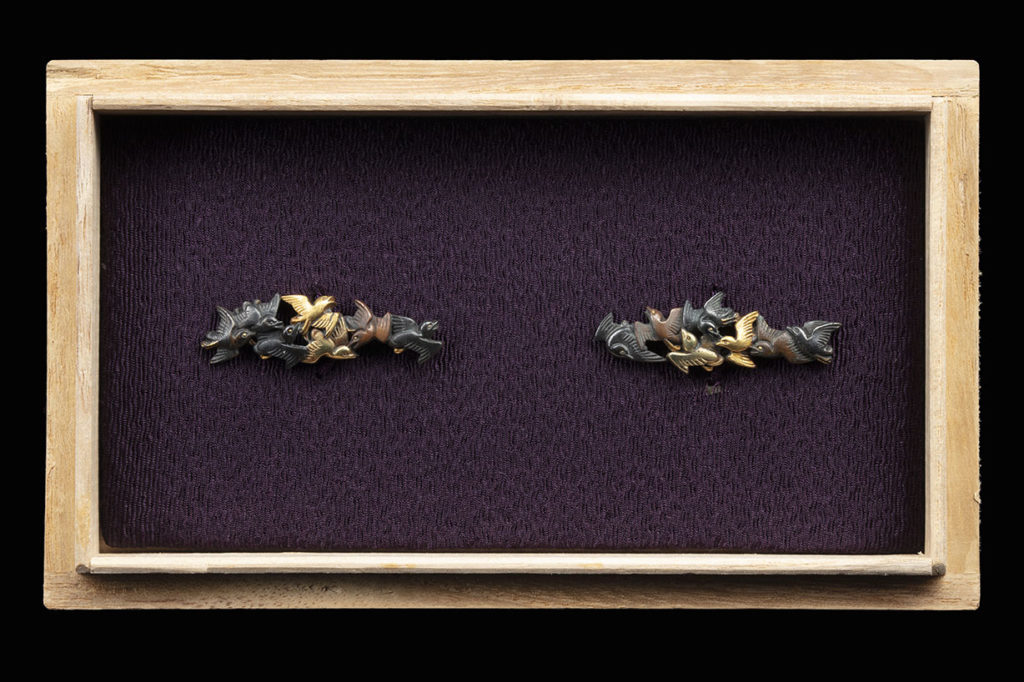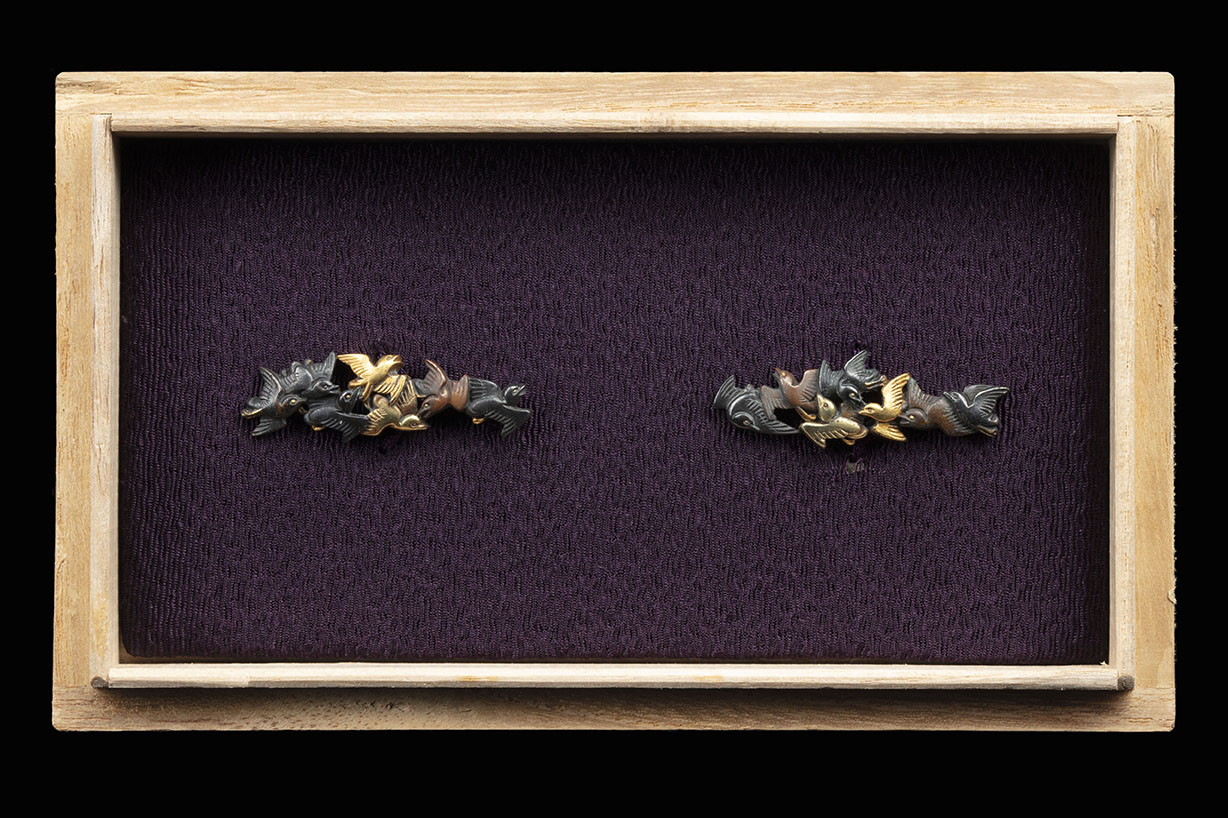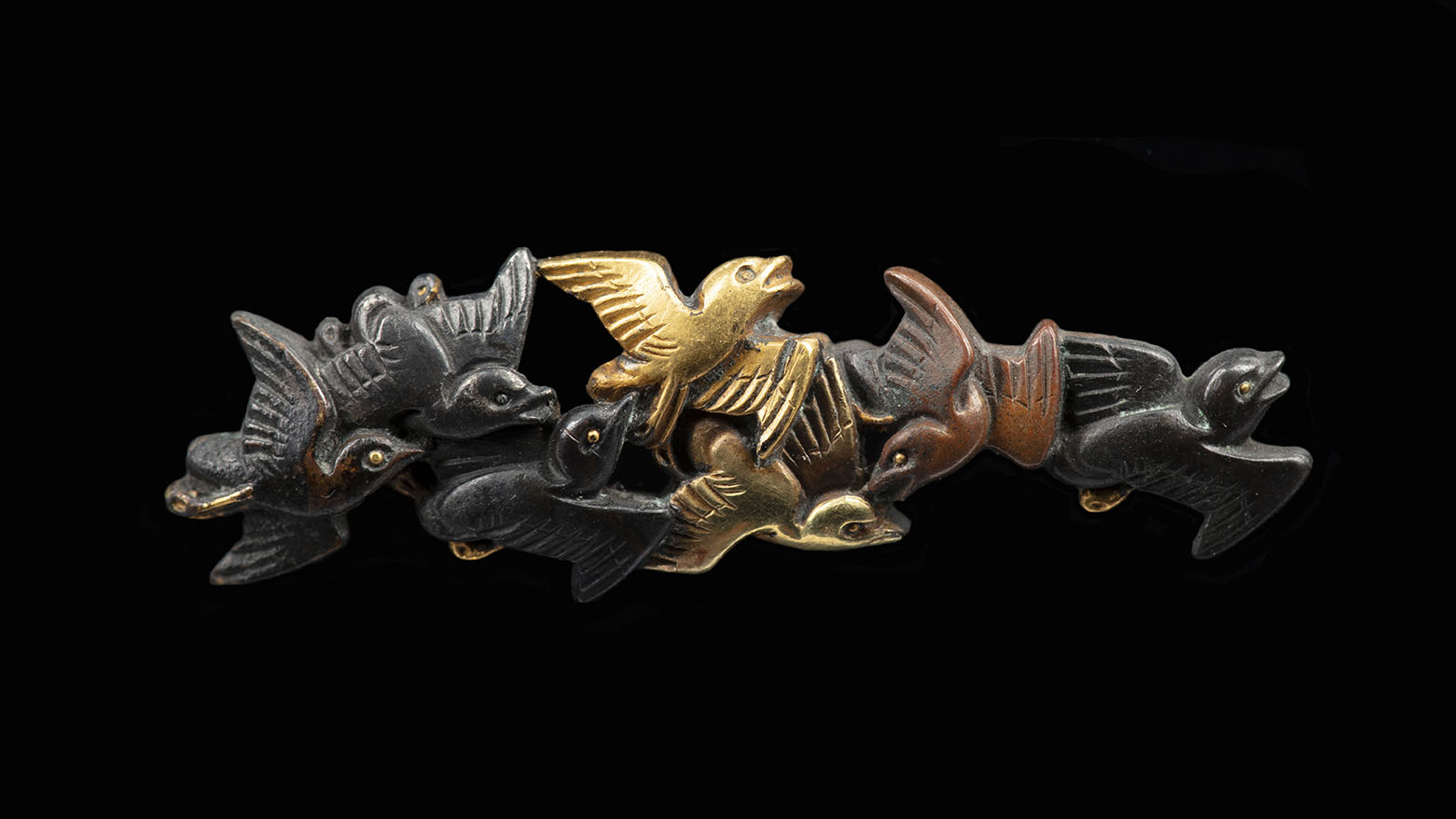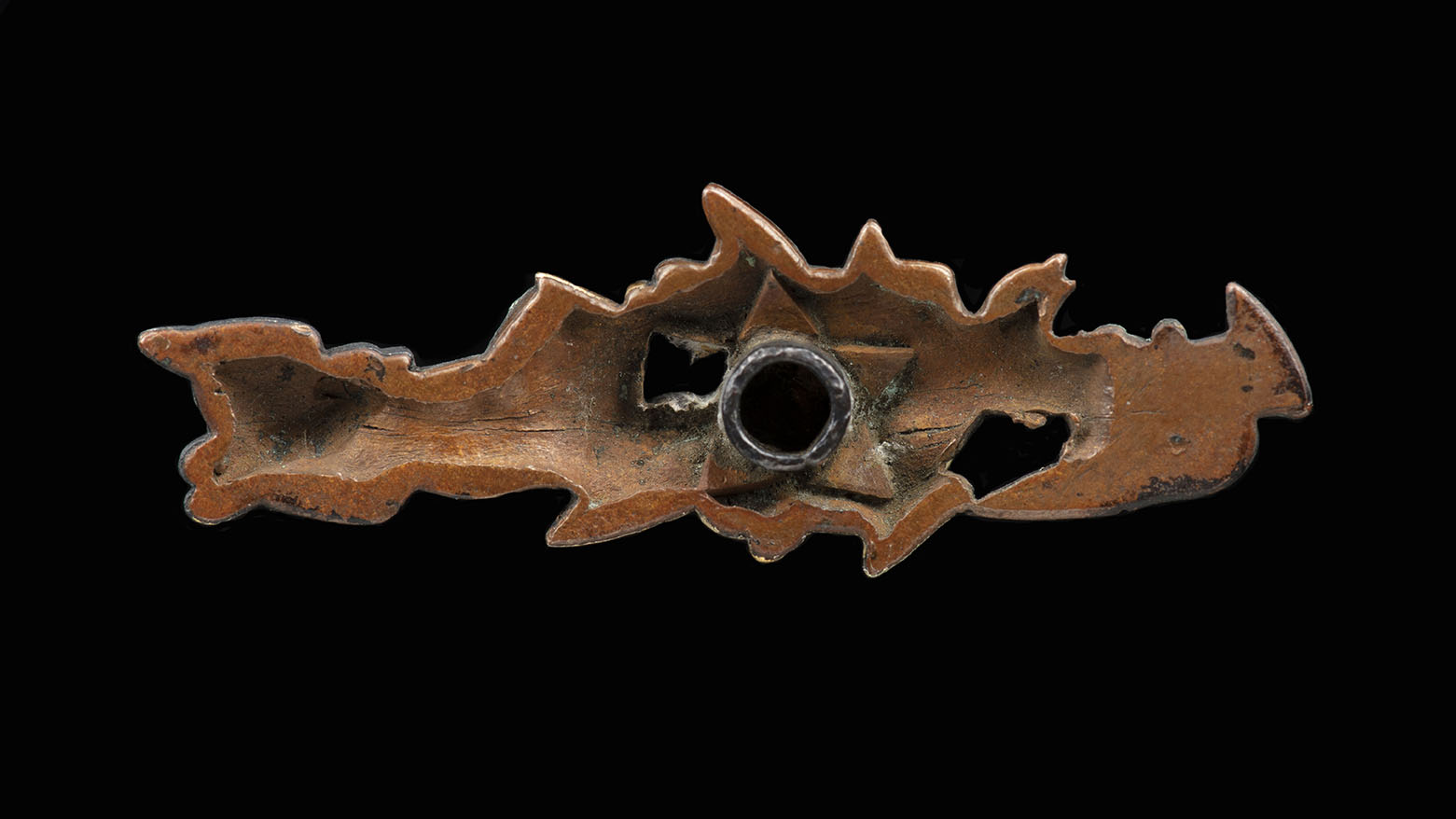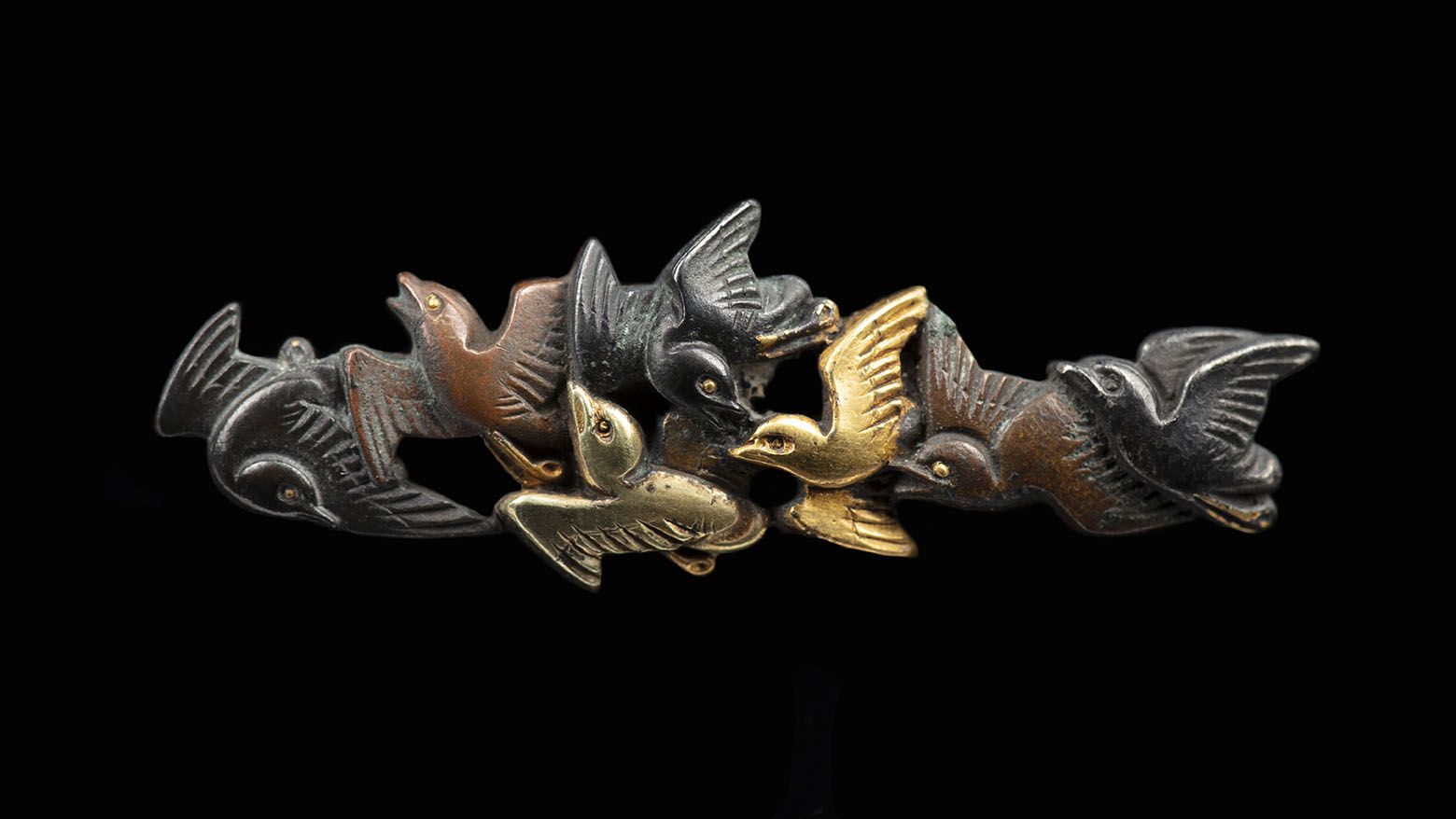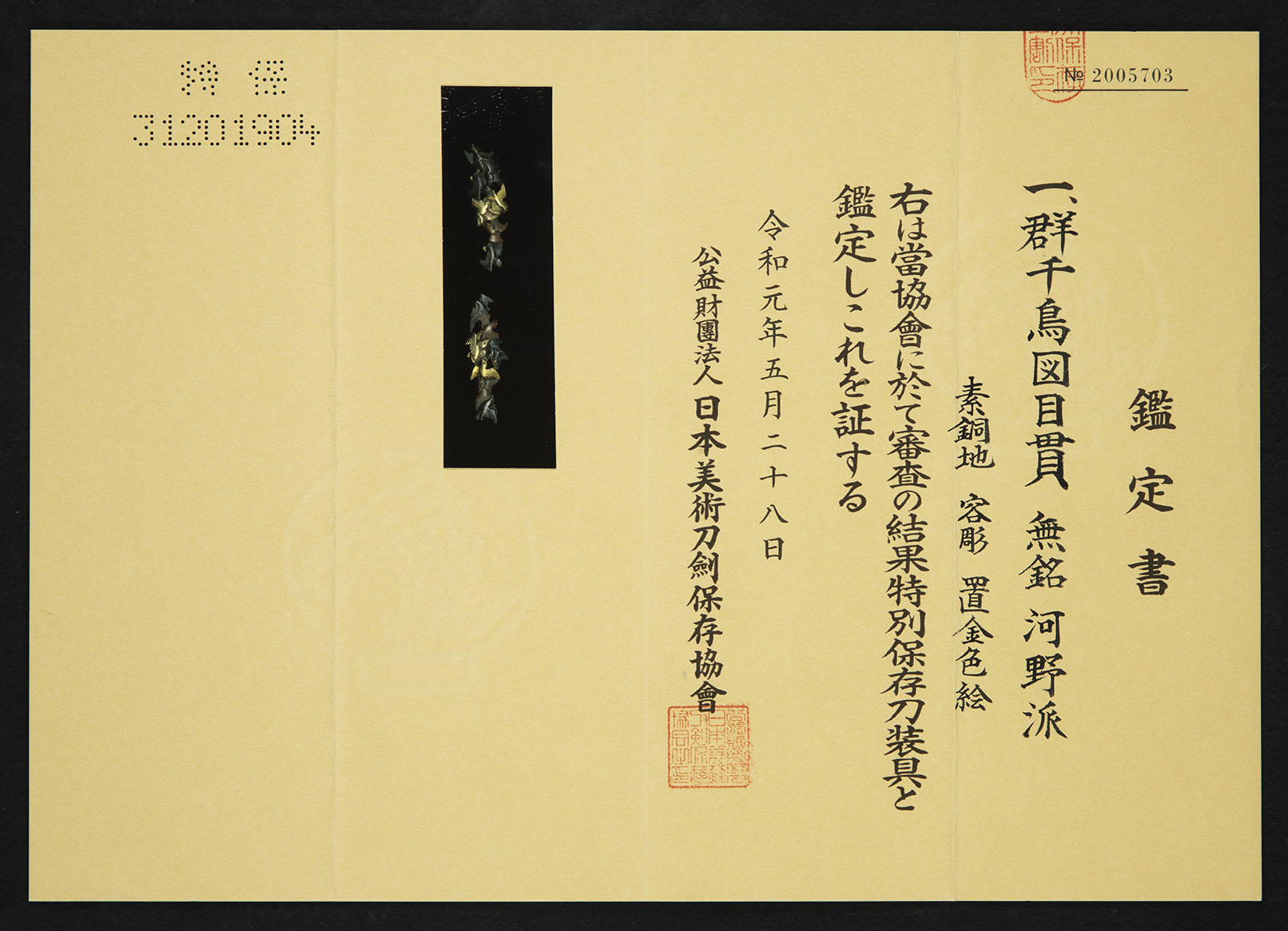Kono School Chidori Menuki
The Kono School was founded by Kono Haruaki, better known by his later name of Haruaki Hogen. Haruaki Hogen was born in Echigo Province (modern day Niigata Prefecture) in 1787. He apprenticed himself to the third generation Yanagawa master from the Yokoya family, Naoharu, from whom he received the “haru” kanji of his name. After his studies, he opened his own workshop in Edo after which his workmanship departed from the traditional Yanagawa approaches and became more free form with depictions of flora and fauna. His name of Hogen was the resulting name from his elevation in Buddhist rank at the age of 40. So more accurately, his name is Hogen Kono Haruaki, but since he signed his later works as Haruaki Hogen, he subsequently became known as, and referred to as such. Because of various signed works that include locations, he is known to have traveled to North Eastern Japan and spent time in Sendai and Dewa provinces. Eventually he returned to Echigo and died at the age of 71.
He is held in very high regard for his workmanship, and there is a saying that implies that “As Ichijo is to Kyoto, Haruaki is to Edo”. Through this kind of mention, the respect and esteem for his work is quite clear. He trained many students, so it would be reasonable to assume that pieces from his workshop would be prepared by them for Haruaki, or made under his supervision, but left unsigned.
These multi-metal menuki are of flocks of Chidori (Plover) all seemingly chattering amongst themselves as they fly. Their movements individually captured but all also flying to a common direction, and individuality further defined by their different colors and expressions. Plovers are also commonly combined with water waves in sword fittings designs. They have the distinctive “Inyokan” male/female style posts in the backs which are a nod to the very earliest tradition of menuki also servicing as the mekugi for securing the tsuka to the nakago. Furthermore, the posts are made of shakudo while the roots and base plate are copper. The star shaped roots add more unique detail to the construction and design that goes well beyond general post designs in other schools.
Genuine Kono school works are rarely encountered. This is an extraordinary opportunity to add a special example of their works to a collection.
They are accompanied by NBTHK Tokubetstu Hozon papers authenticating their origin, quality, and condition. Achieving Tokubetsu Hozon level papers is a measure more difficult for fittings than for swords. These menuki were submitted to the Hozon/Tokubetsu Hozon Tosogu shinsa and passed through directly to Tokubetsu Hozon on the first try.
A Palownia wood box is included.
SOLD
